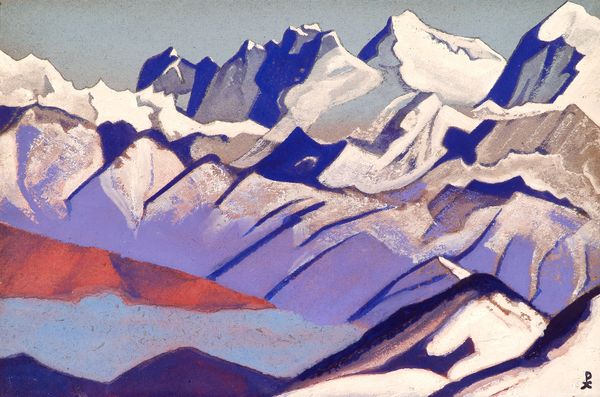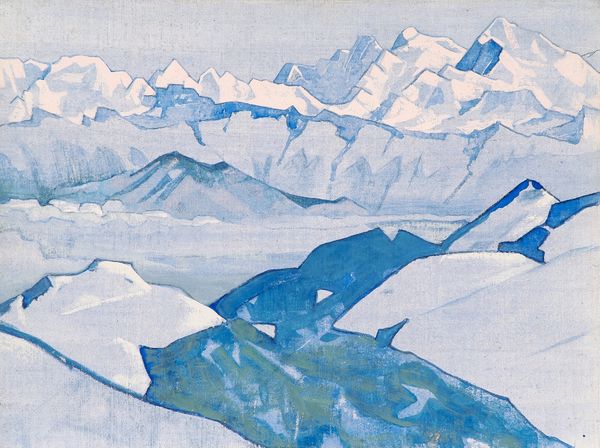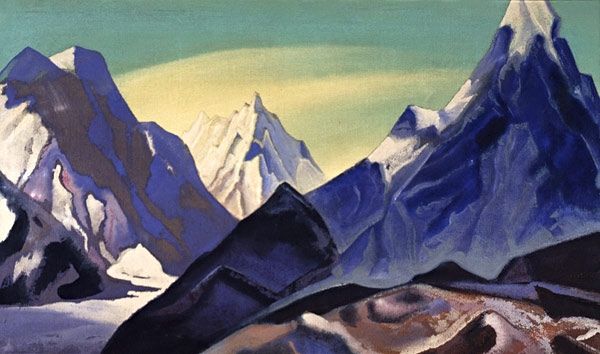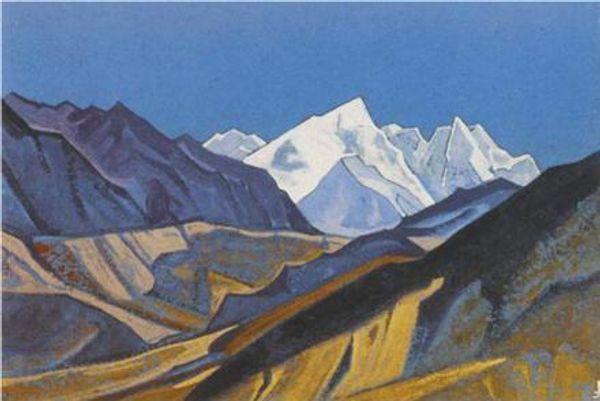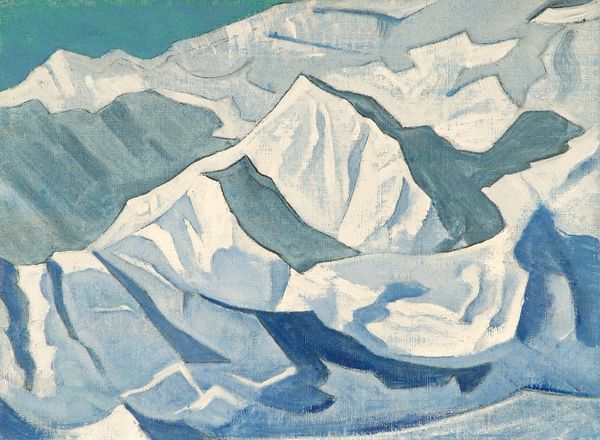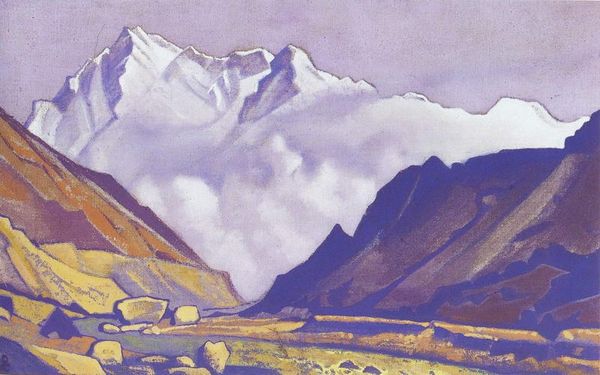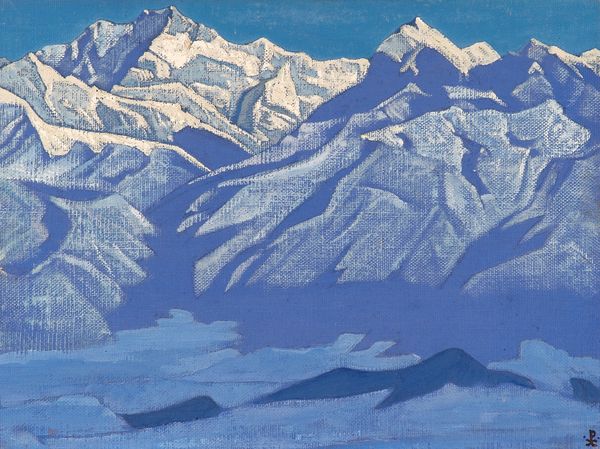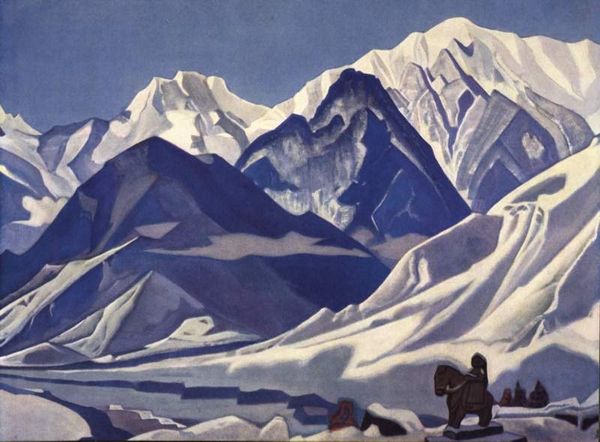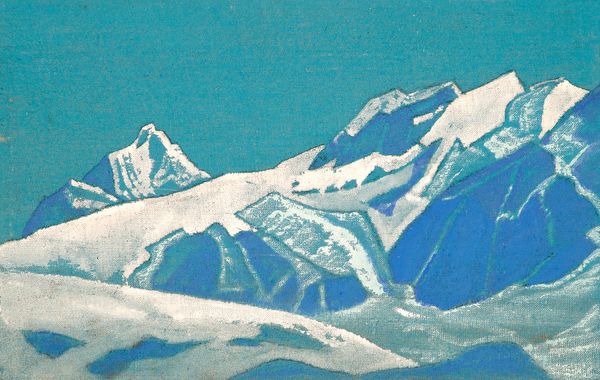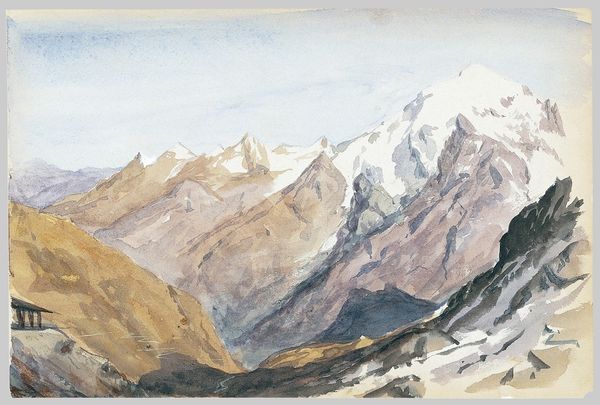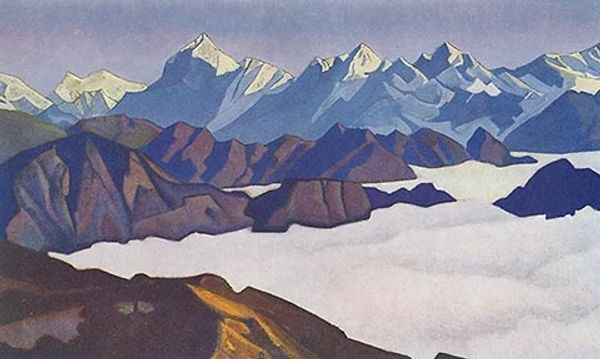
Copyright: Public domain
Curator: Looking at Nicholas Roerich's "Devita" from 1932, done with oil paint, the overwhelming feeling is one of cold grandeur. Editor: Grandeur certainly! The sheer scale of those mountains, depicted with those blues and whites, feels almost imposing. It reminds me of early 20th-century romantic depictions of untouched landscapes and perhaps serves the artist’s socio-political ambitions for the public. Curator: Well, consider that Roerich's work often involves layering materials to build up the surface. Look at the texture in the mountains; you can almost feel the cold radiating from the canvas. The technique mimics the very geological processes that formed those peaks over millennia, don’t you think? Editor: Interesting perspective. To me, that impasto technique highlights the almost mythical quality that mountains possessed, as sacred places of solitude and purity removed from industrial processes. Given Roerich’s background with the Russian Revolution, how could those views figure in social terms? Curator: Perhaps his method, his technique of building form from strokes, reflects a desire to capture something immutable. An anchor perhaps, which is certainly linked to a longing for the ‘authentic’ among intellectuals around 1932 when that painting was done, wouldn't you say? Consider that the pigment itself would have been rather precious in that period; there’s a sort of irony here that appeals to our sensibilities nowadays: to show unspoiled landscapes painted in such costly industrial material. Editor: And speaking of materiality, I'm struck by the role this plays in our contemporary view of the world and ecological responsibilities. Does appreciating that mountain in that way offer a modern path toward those aims in an eco-critical setting? Curator: That’s a valid approach. After all, by reflecting on how paintings and similar works shape our view, we might reassess our shared value and reframe artistic canons according to how much that past served the contemporary aims. Editor: I concur, it’s hard not to link Roerich's choice of subject with the period’s socio-political mood and nowadays challenges around sustainability. "Devita" definitely offers much to analyze. Curator: Agreed! It's a canvas rich with layers of meaning beyond just what the eye can see.
Comments
No comments
Be the first to comment and join the conversation on the ultimate creative platform.

